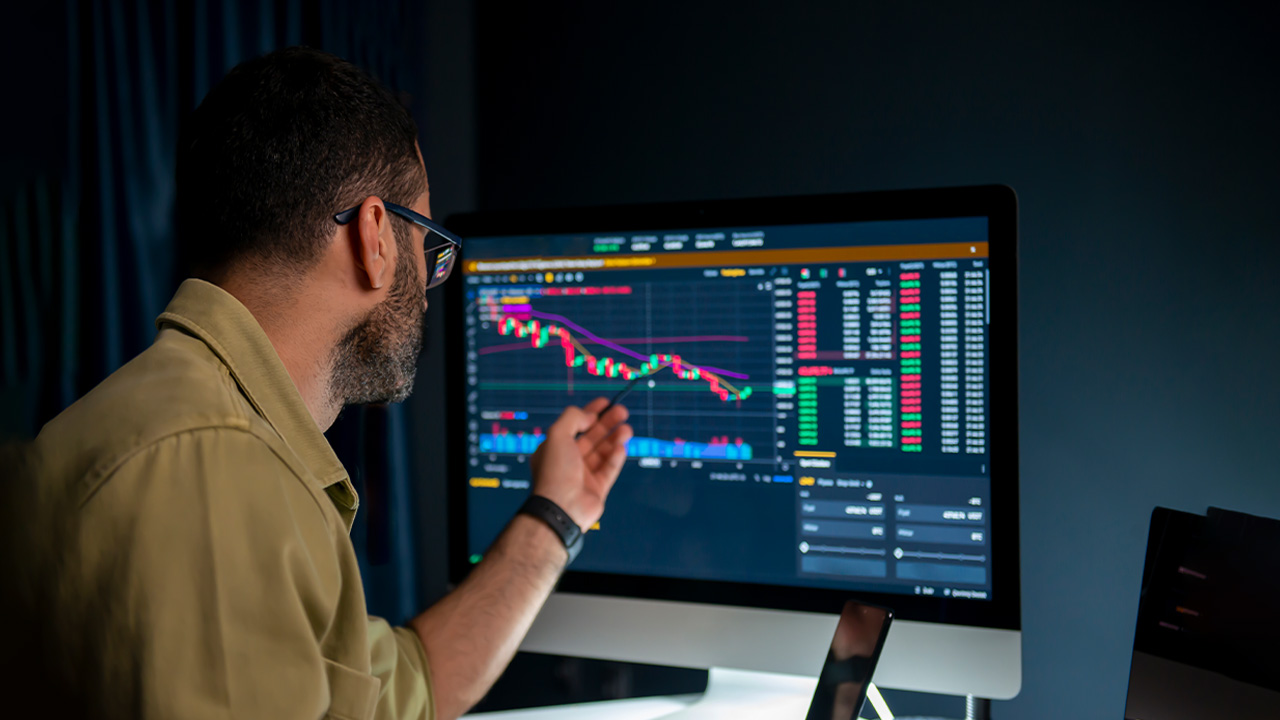Did you find this article useful?

Whether you’re a seasoned investor or just starting out, it helps to understand how indices work and what options are available. This way you can make the best investment choices to maximise your returns.
We’ll walk you through the following:
Let’s start with a quick refresher. A stock market index is a tool to measure the performance of a group of shares listed on a stock exchange. It can represent a market or a sector.
Investors and financial analysts use an index to get a picture of how well these shares are doing. Think of it like a report card for the market. For example, if an index rises by 4%, the average value of the stocks in that group has gone up by 4%.
An index can be used as a benchmark to track an investment portfolio’s performance.
Some of the best-known indices worldwide include the S&P 500 index tracking the top 500 US shares, and the FTSE 100, covering the top 100 shares on the London Stock Exchange.
The Australian Securities Exchange (ASX) is the country’s main stock exchange, based in Sydney. It’s where shares and other financial products are bought and sold.
It’s one of the world’s top 20 stock exchanges and lists over 2,000 companies.
The ASX partnered with Standard & Poor’s (S&P) to create and manage its indices. They often carry both names, for instance S&P/ASX 200, meaning they're Australian but follow global standards.
Australia has several indices tracking groups of companies or segments of the market. They include the ASX 200 and All Ordinaries.
The ASX 200 or S&P/ASX 200 is Australia’s main index. As the name suggests, it tracks the top 200 companies listed on the ASX.
It represents about 80% of the market, making it a good indicator of overall performance.
Many Exchange-Traded Funds (ETFs) and managed funds track the ASX 200 index, using it as a benchmark.
There are a number of sector indices within the ASX200, including:
Commonly known as the All Ords, this index tracks the top 500 companies on the ASX by market size.
The S&P ASX Small Ordinaries is the oldest index in Australia and includes a wider range of companies than the ASX 200, which focuses more on the big players. The All Ords covers 80 to 90% of the market.
Investors often check both the All Ords and the ASX 200 to get a full picture of the health of the market.
If you’re thinking about trading shares on the ASX or wondering how to invest in index funds, it helps to consider your goals and risk appetite.
Trading on the ASX involves buying and selling individual stocks. Some index funds and stocks may also produce income from the dividends that companies may pay out at their discretion.
To build a portfolio, follow these steps:
Remember that investing carries risks, and there are no guarantees of returns. Take a long-term view and diversify your holdings to reduce risk.
Index funds are a simple, low-cost way to invest in the broader market instead of specific shares.
An index fund tracks an index like the ASX 200. It holds the same stocks or other assets, and the returns mirror the index’s performance. You can buy and sell units in the fund without having to buy and sell the stocks. Bear in mind you’ll still need a share trading account to invest in index funds.
Examples of index funds include:
Other investment options can include bonds, commodities and real estate.
When investing in index funds, you can choose between active and passive funds.
Active funds are those managed by professional fund managers who proactively buy and sell stocks to improve the fund’s performance.
Passive funds, meanwhile, replicate the performance of a specific index, like the ASX200.
There are pros and cons to each. Active funds have the potential to outperform the index but have higher management fees. Bear in mind though that actively managed funds may also underperform the index. Passive funds have lower fees and are consistent but may not have the same gains as an active fund.
Interested in passive income information? Read Smart passive income ideas.
If you’re thinking about diversifying your portfolio, you may also want to consider looking further afield. Investing in international shares can also reduce the risk of market volatility.
“In the current economic climate, our customers are telling us they’re thinking more strategically about how and where they invest. Many are looking internationally and see it as a way to diversify their portfolios,” said Donahue D’Souza, Head of Investments at HSBC Australia.
“They want to explore global trends, emerging markets and sectors not readily available at home.”
The USA’s main stock market index is a popular choice for diversification. It tracks 500 of America’s biggest companies, including Apple, Amazon and Microsoft.
To invest in the S&P in Australia, you can buy an ASX-listed ETF which tracks the index. This means you can invest in the US market without leaving the ASX. Some managed funds also invest in the US market.
You can also invest in the S&P 500 using an international trading platform like WorldTrader. This gives you access to over 30 markets and 80 exchanges, including the S&P 500.
Grow your wealth potential with WorldTrader.
Australian indices offer a number of ways to build your wealth. By understanding how the stock market works and diversifying your portfolio, you can make smart investment decisions.
Remember to stay disciplined and focus on long-term growth. If you’re unsure about anything, reach out to us.
Did you find this article useful?


